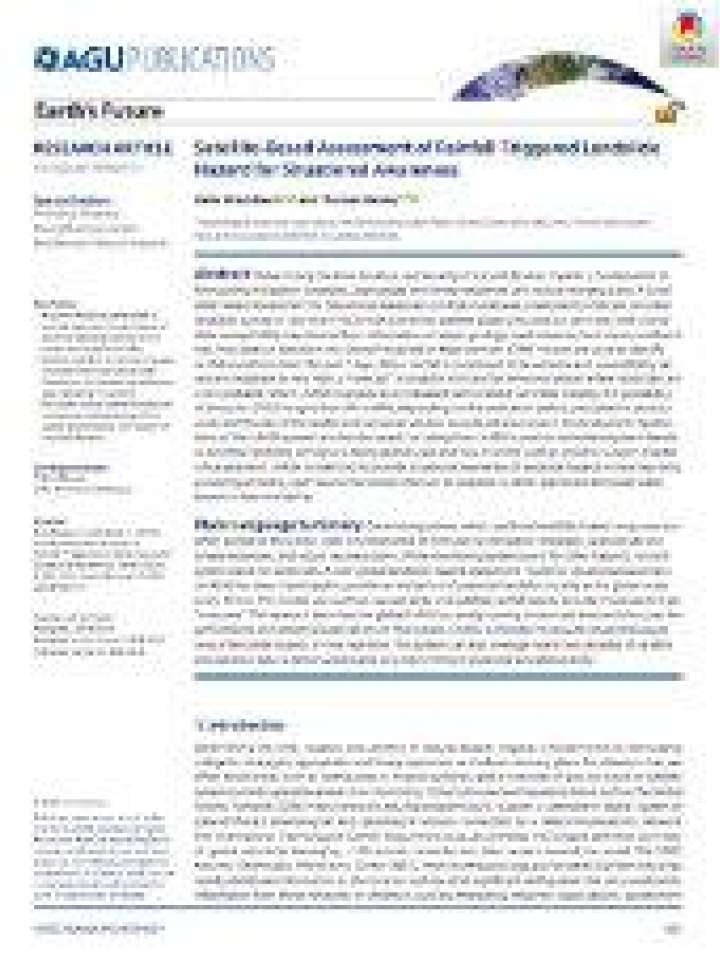Satellite‐based assessment of rainfall‐triggered landslide hazard for situational awareness
Determining the time, location, and severity of natural disaster impacts is fundamental to formulating mitigation strategies, appropriate and timely responses, and robust recovery plans. A Landslide Hazard Assessment for Situational Awareness (LHASA) model was developed to indicate potential landslide activity in near real‐time. LHASA combines satellite‐based precipitation estimates with a landslide susceptibility map derived from information on slope, geology, road networks, fault zones, and forest loss. Precipitation data from the Global Precipitation Measurement (GPM) mission are used to identify rainfall conditions from the past 7 days. When rainfall is considered to be extreme and susceptibility values are moderate to very high, a “nowcast” is issued to indicate the times and places where landslides are more probable. When LHASA nowcasts were evaluated with a Global Landslide Catalog, the probability of detection (POD) ranged from 8% to 60%, depending on the evaluation period, precipitation product used, and the size of the spatial and temporal window considered around each landslide point.
Applications of the LHASA system are also discussed, including how LHASA is used to estimate long‐term trends in potential landslide activity at a nearly global scale and how it can be used as a tool to support disaster risk assessment. LHASA is intended to provide situational awareness of landslide hazards in near real‐time, providing a flexible, open‐source framework that can be adapted to other spatial and temporal scales based on data availability.
Explore further
